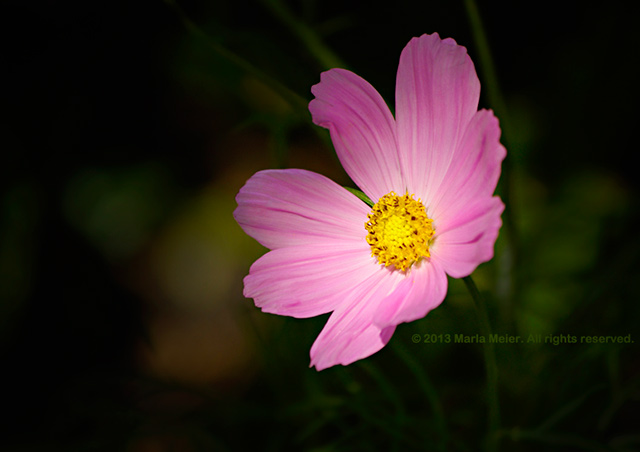Using the rule of reciprocity is the key to well exposed photos. Your camera meter may indicate an exposure that works for the scene, but if you know the rule of reciprocity, you can choose a wide variety of exposure settings.
The limits are the f/stop range of the lens and/or the fastest shutter speed on the camera body.

Reciprocity is the relationship between the shutter speed (length of time light is let in) and the aperture setting (the diameter of the lens opening). When you add a “stop” of light entering the camera with one of the exposure controls (either the f/stop or shutter speed), you balance it by taking away a “stop” of light with the other.
For instance, one stop increase in aperture is equivalent to the shutter speed duration doubling. Now both will increase the amount of light to the sensor by one stop.
A “stop” is a photographic term for twice or half the amount of light. It is the basic control used on all professional level cameras (those with f/stop and shutter speed settings). Both the f/stop and shutter speed controls can change the amount of light reaching the sensor in stops.
An easy way to remember it is… The aperture and shutter speed settings work in opposing directions.
If the aperture is set with a small opening, such as f/16, the shutter will need to be open an extended length of time to allow enough light for a properly exposed image. Conversely, if the aperture is set with a large opening, such as f/4, the length of time the shutter remains open will be short.
For example…
You are outdoors in bright light and the camera’s exposure meter (or light meter) indicates an exposure of f/16@1/125 at ISO 100. You actually have many other choices for taking that picture. All of them will allow the same amount of light to reach the sensor and expose the image properly.
If your lens’ smallest aperture is f/16, you will only have one direction you can go. You can let in one more stop of light by choosing f/11 on the lens and cut out a stop of light by using a 1/250 shutter speed.
You now have an exposure with the exact same “Exposure Value” as the previous one, only your exposure settings have changed.
So, you may be asking yourself, why would I choose f/11@1/250 over f/16@1/125? Well, the f/stop controls something called Depth of Field, or how deep the focus is in the field of vision, and the shutter speed controls motion.
Using an f/stop one stop away may not change the look of the final image that much, but what if we use our knowledge of reciprocity again and again?
We can open the lens another stop to f/8 and change the shutter speed to f/500 and again to f/5.6 and the shutter at 1/1000 and, if your camera has the 1/2000 shutter speed, we can use f/4@1/2000 and get exactly the same exposure value that we had from the original f/16@1/125 setting.
Now the look of the finished image is greatly changed because f/4 has very little depth of field compared to f/16. The background of the picture taken at f/4@1/2000 will be soft, and the subject will be sharp and clear (if focused correctly).
You have isolated your subject from the background – a very popular trick used in portrait and floral photography. No longer is the background competing with the subject. You have successfully used the rule of reciprocity to change the look of your final image.

Experiment with your camera. Create the same image three times using f/4, f/8 and f/16. Try it with a scenic image and a portrait or close subject. When you look at the photos you will be able to see how the changes in the aperture setting (or f/stop) affect the look of your pictures.
What if the image is still not properly exposed?
Now, if you still cannot achieve the look you desire, the ISO (sensors sensitivity to light) can be adjusted accordingly in order to decrease or increase the amount of light to the sensor. It again works on stops of light.
There are standard measurements of ISO used: 100, 200, 400, 800 and on up as far as your camera allows. Each doubling of the numbers represents 1 stop of light – increase from ISO 100 to ISO 200 and the image will be brighter. It will affect your shutter speed and aperture combinations used.
For instance, if there is extremely fast action and not enough light is let in because you can’t get a wide enough aperture, selecting a higher ISO will make the camera more sensitive to light and allow for correct exposure of the photo.
Experiment with you camera once again. Create an image three times while maintaining the same shutter speed and aperture settings. Adjust the ISO from 100 to 200 to 400 and look at the affect it has on the photo made.
Keep experimenting. Find a subject you enjoy and just sit and play with the setting on your camera until you get a true sense of how the shutter speed, aperture and ISO relationships affect the final image.
By Matthew L. Kees
Photos: © Marla Meier. All right reserved.

Leave a Reply